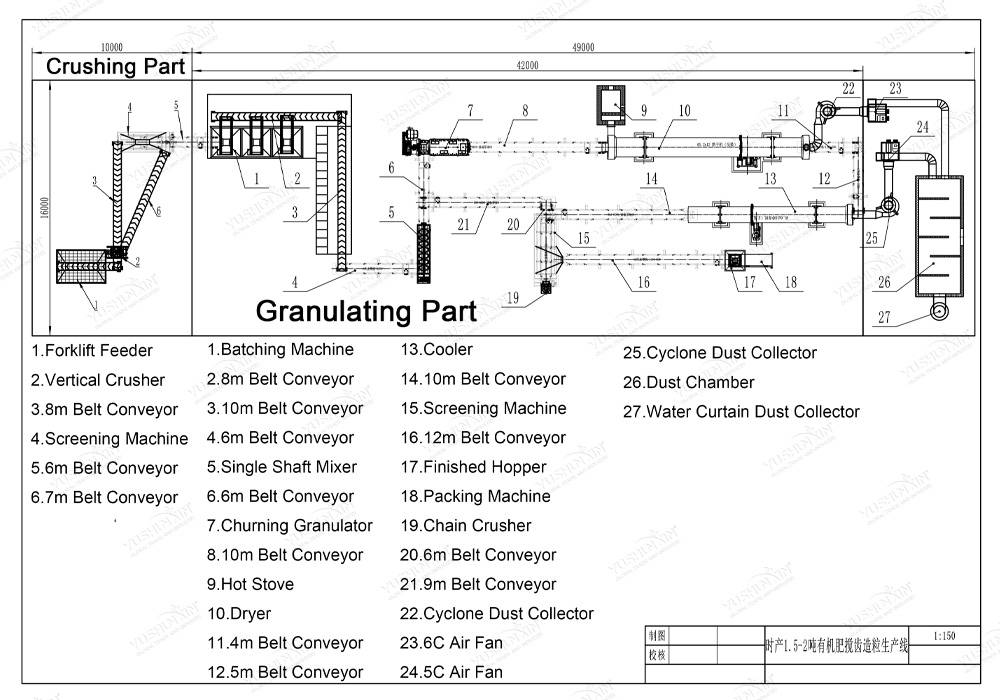






リン酸岩を使用可能な肥料形に変換します, 酸が必要です “炭酸” 岩, 可溶性リン化合物を放出します. 使用される一般的な酸は含まれます:
作成する NPK肥料, 窒素とカリウムの他の供給源は、リン酸材料と混合できます. いくつかの例が含まれます:
各生産ラインのコストは、生産能力によって異なります, 自動化の程度, および特定のニーズ. 以下のフォームに記入すると、正確な見積もりを提供します!
肥料製造装置に興味がある場合, 要件と連絡先を提出してください。その後、2日以内にご連絡いたします。. 私たちはあなたのすべての情報が誰にも漏れないことを約束します.
- 会社はに設立されました 2005 そして、オーガニック肥料機器の研究開発と製造に焦点を当てています 20 年. 40,000mの大規模な有機肥料機器生産ベースを構築しました, 高度な顆粒を使用します, 生産効率と製品の品質を向上させるための乾燥およびスクリーニング技術.
- 自己操作の輸入および輸出企業が多い 80 世界中のプロのエンジニア, それ以上のサービスを提供しています 100 世界中の国と地域, 5,000+ カスタマーサービスのケース, 10 処理センター, 3 レーザー切断機, そしてそれ以上 60 さまざまなタイプの機器.
- 多くの科学研究機関や大学との長期的かつ広範な協力を維持する, with a professional R&D team, 市場の需要に応じて機器のパフォーマンスを継続的に最適化することができます.
- 高強度の耐摩耗性材料, 炭素鋼Q235/合金は、機器が耐久性があることを確認し、メンテナンスコストを削減するために選択されています.
- 生産自動化のレベルを改善し、手動依存を減らすためにインテリジェントな制御システムを採用する.
- ISO, ce, SGS国際認定
- 大規模な生産能力, さまざまな生産能力要件を満たすことができます (小さい, 中型および大規模な生産ライン).
- すべての範囲の機器モデル, 有機肥料などのさまざまな種類の肥料の生産に適しています, 化合物肥料, 生物学的肥料, 水溶性肥料, 液体肥料, 等.
- パーソナライズされたデザインは、顧客のニーズに応じて提供できます, 生産能力を含む, サイトレイアウト, 環境保護基準, 等.
- 生産ラインソリューションの完全なセットを提供します, 機器の選択を含む, インストールと試運転, 技術トレーニング, 等.

- 直接工場の供給, Middlemanリンクの削減, そして、価格はより競争力があります.
- 機器はエネルギー効率が高くなっています, エネルギー消費を削減します, 顧客が長期的な運用コストを削減するのに役立ちます.
- 直接工場の供給, Middlemanリンクの削減, そして、価格はより競争力があります.
- 機器はエネルギー効率が高くなっています, エネルギー消費を削減します, 顧客が長期的な運用コストを削減するのに役立ちます.